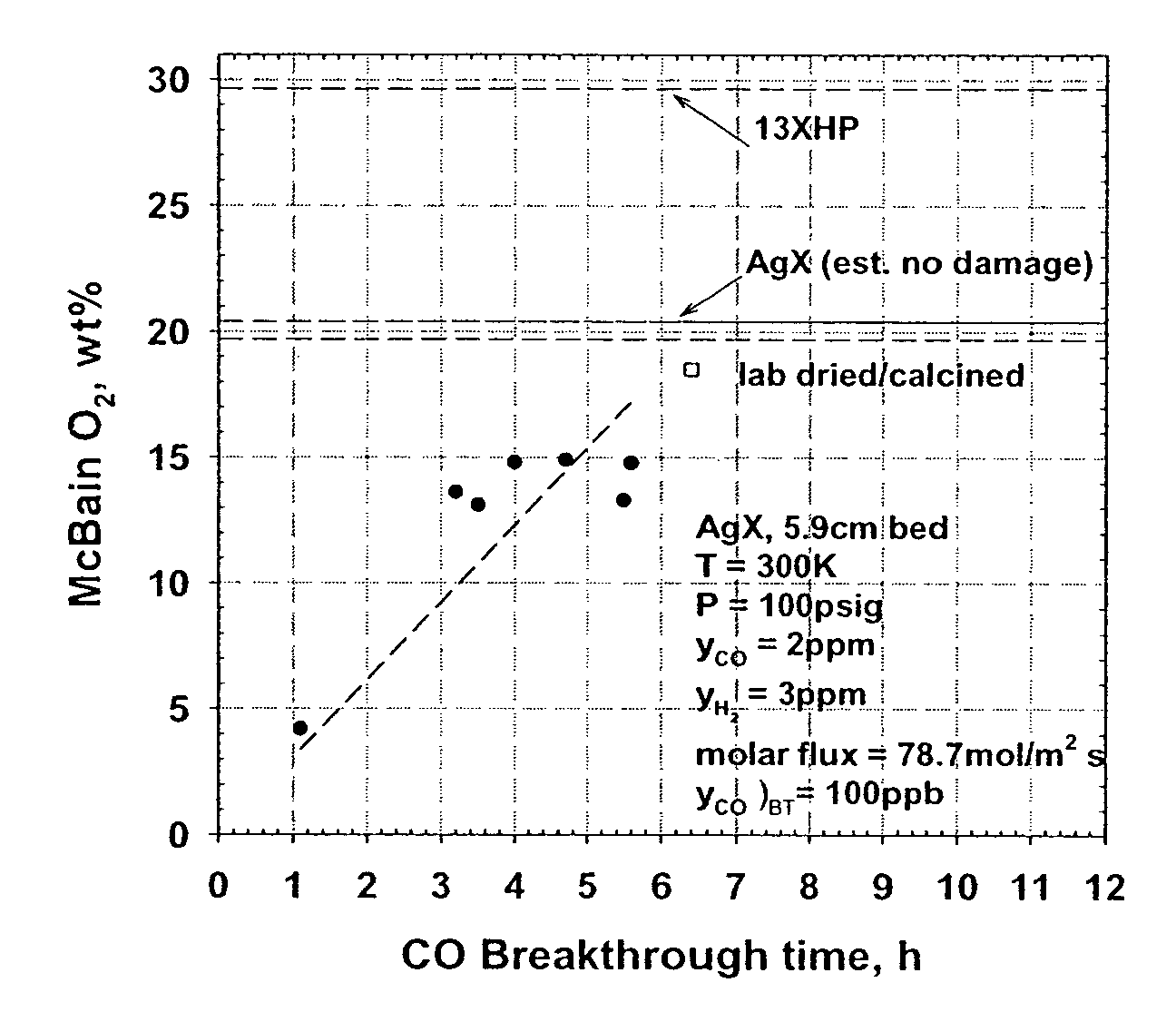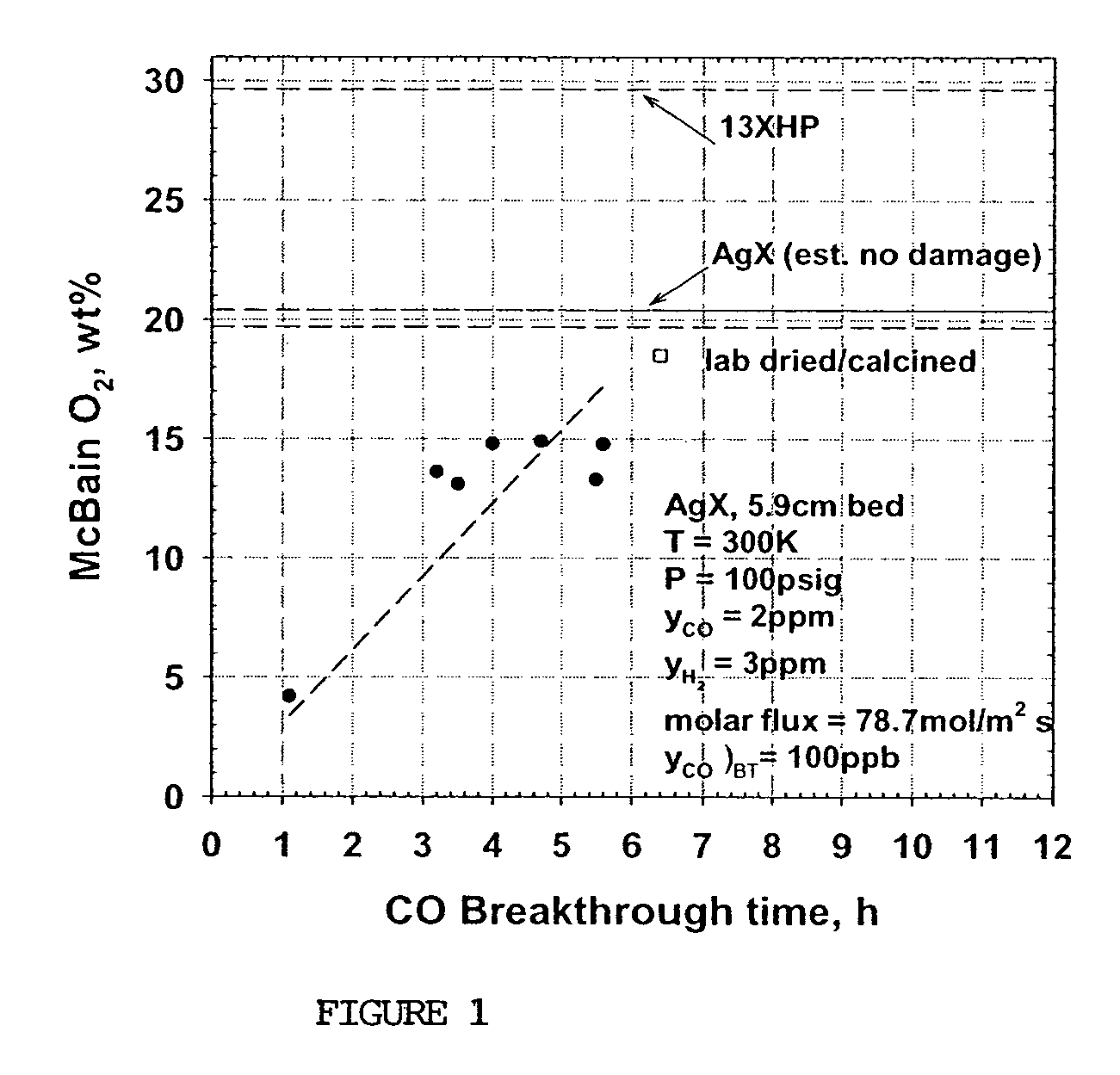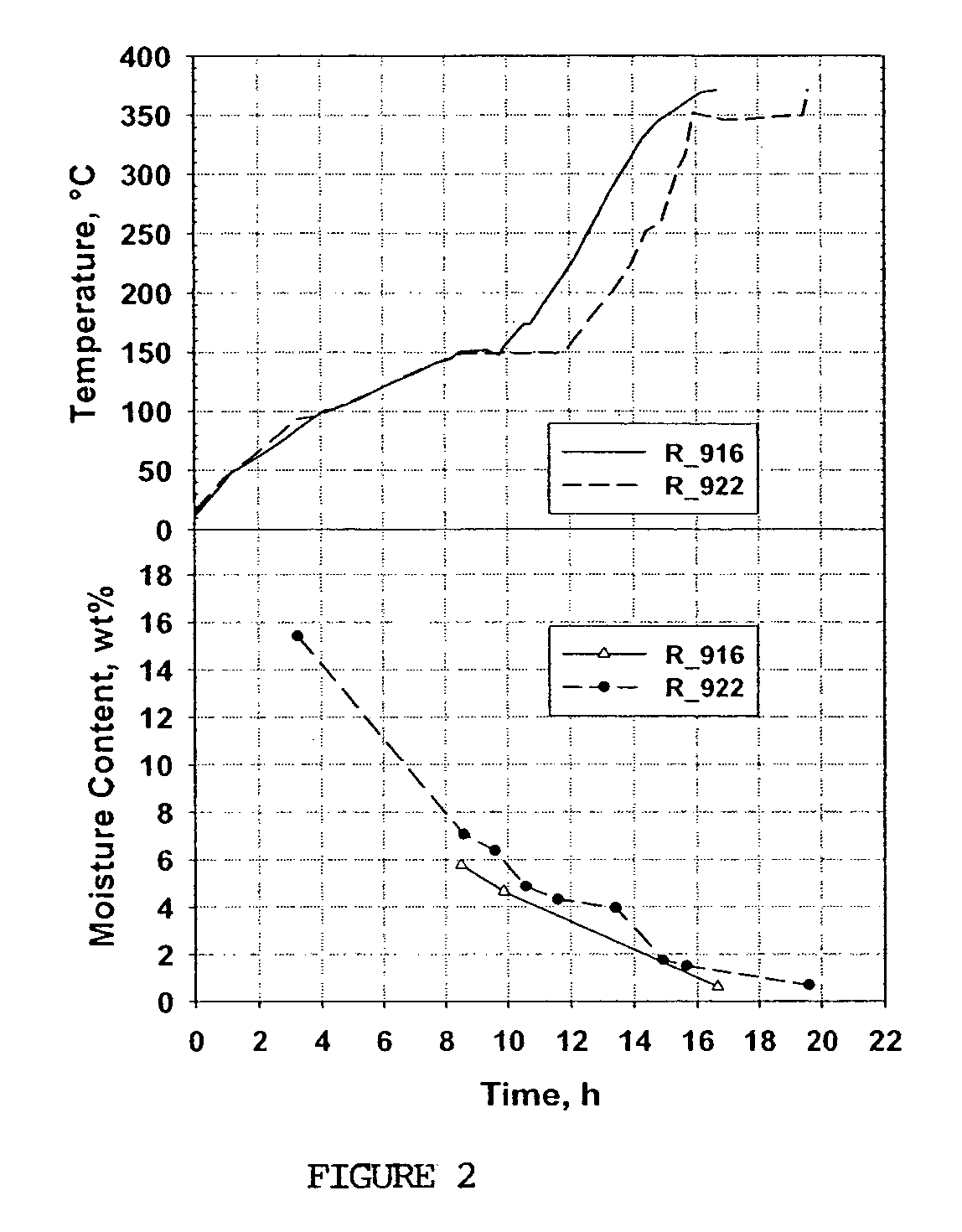Silver-exchanged zeolites and methods of manufacture therefor
a technology of silver-exchanged zeolites and adsorption methods, which is applied in the field of silver-exchanged zeolites and methods of manufacture therefor, can solve the problems of limited equilibrium co capacity data obtained from pure component isotherms, inability to guarantee the production of large quantities of adsorbents with desirable properties, and inability to confirm the utility of such materials in real processes designed for removal and/or recovery of co or other contaminants of interest. , to maximiz
- Summary
- Abstract
- Description
- Claims
- Application Information
AI Technical Summary
Benefits of technology
Problems solved by technology
Method used
Image
Examples
example 1
[0065]Samples of commercially available AgX zeolites were obtained from Aldrich Chemical Co., Inc. of Milwaukee, Wis. (C—0) and Molecular Products, Inc. (C*CHEM Division), located in Lafayette, Colo. (C—1-C—5) as shown in Table 1. These materials are advertised as H2 getters for use in vacuum spaces (e.g. as described in U.S. Pat. No. 3,108,706), for catalyzing H2 / O2 reactions and for removal of halogens from gas streams. Received as (10×16) beads, the average diameter of these zeolites was between 1.4 mm and 1.5 mm. The samples C—1-C—5 represent different production lots, all dried and activated as part of their original processing. However, samples C—2, C—3 and C—4 were all received with moisture content greater than 2.0 wt %. Because of the high Ag wt %, these zeolites are quite expensive, e.g. more than $200 / kg. The Ag wt %, moisture content and McBain O2 were measured using the methods referenced above and are provided in Table 1.
[0066]
TABLE 1Commercial AgX ZeolitesMoistureAgMc...
example 2
[0070]Several samples of commercially available 13XHP (10×20) zeolite beads (89429-556P-lot no.) were obtained from UOP of Des Plaines, Ill. 13XHP is a synthetic NaX zeolite with a Si / Al ratio of approximately 1.25. The McBain O2 capacity for a pure binderless NaX with the same Si / Al is approximately 33 wt % to 34 wt %, while the average O2 capacity of the bound zeolites of Table 2 is 29.65 wt %. The initial step of heating / evacuation in the McBain O2 test thoroughly dries the sample and eliminates any effects of moisture upon the O2 adsorption. The relative difference in the McBain O2 (or difference in micropore volume) between the bound 13XHP and the pure NaX powder indicates that the commercial starting material (13XHP) contains approximately 10 wt % to 12 wt % binder.
[0071]The weight fraction of Ag in a fully exchanged AgX can be computed from the well-known structure and composition of the pure dehydrated NaX zeolite (Bolton), i.e. starting with NaX and exchanging essentially a...
example 3
[0077]Samples of commercial AgX from a sixth production lot (C—6) were obtained from Molecular Products, Inc. (C*CHEM division). C—6 (received with a moisture content of 1.9 wt %) was produced by the same methods as samples C—1 through C—5. A second sample (C—7) was prepared in the laboratory using the same 13XHP base zeolite, ion exchange solutions and procedures as in the production of C—6 up through the completion of the ion exchange and washing steps, i.e. prior to any thermal treatment. A portion of this C—7 sample (50-100 g) was then air dried at ambient conditions. A standard 5.9 cm bed was then packed with this material (about 11.5 g), placed in a tube furnace and purged at 13.6 slpm with dry N2 while simultaneously increasing the temperature (1° C. / min) to 150° C. and holding for several hours. Sample C—6 was also placed in a standard 5.9 cm bed. Both C—6 and C—7 beds were then activated at 350° C., followed by CO breakthrough tests performed at 27° C., using the same proce...
PUM
| Property | Measurement | Unit |
|---|---|---|
| equilibrium adsorption capacity | aaaaa | aaaaa |
| pressures | aaaaa | aaaaa |
| pressures | aaaaa | aaaaa |
Abstract
Description
Claims
Application Information
 Login to View More
Login to View More - R&D
- Intellectual Property
- Life Sciences
- Materials
- Tech Scout
- Unparalleled Data Quality
- Higher Quality Content
- 60% Fewer Hallucinations
Browse by: Latest US Patents, China's latest patents, Technical Efficacy Thesaurus, Application Domain, Technology Topic, Popular Technical Reports.
© 2025 PatSnap. All rights reserved.Legal|Privacy policy|Modern Slavery Act Transparency Statement|Sitemap|About US| Contact US: help@patsnap.com



